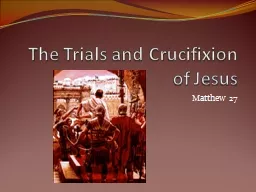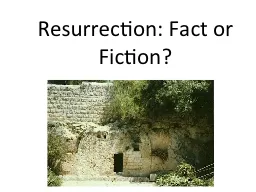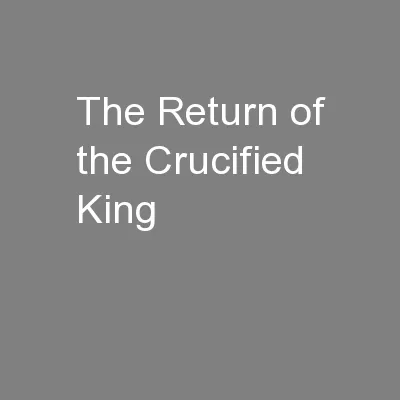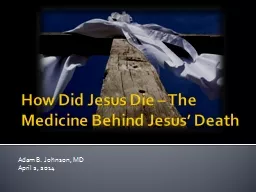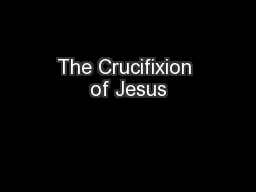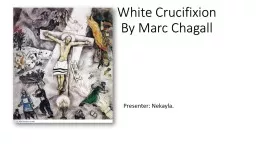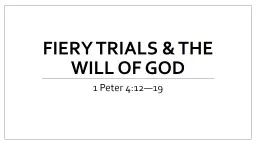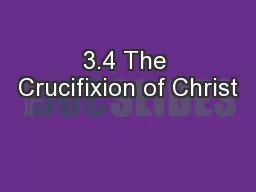PPT-The Trials and Crucifixion of Jesus
Author : test | Published Date : 2017-04-05
Matthew 27 Laws related to Jewish Trials If a man was arrested for a capital crime he could never be arrested at night It had to be in broad daylight Jesus arrest
Presentation Embed Code
Download Presentation
Download Presentation The PPT/PDF document "The Trials and Crucifixion of Jesus" is the property of its rightful owner. Permission is granted to download and print the materials on this website for personal, non-commercial use only, and to display it on your personal computer provided you do not modify the materials and that you retain all copyright notices contained in the materials. By downloading content from our website, you accept the terms of this agreement.
The Trials and Crucifixion of Jesus: Transcript
Download Rules Of Document
"The Trials and Crucifixion of Jesus"The content belongs to its owner. You may download and print it for personal use, without modification, and keep all copyright notices. By downloading, you agree to these terms.
Related Documents

